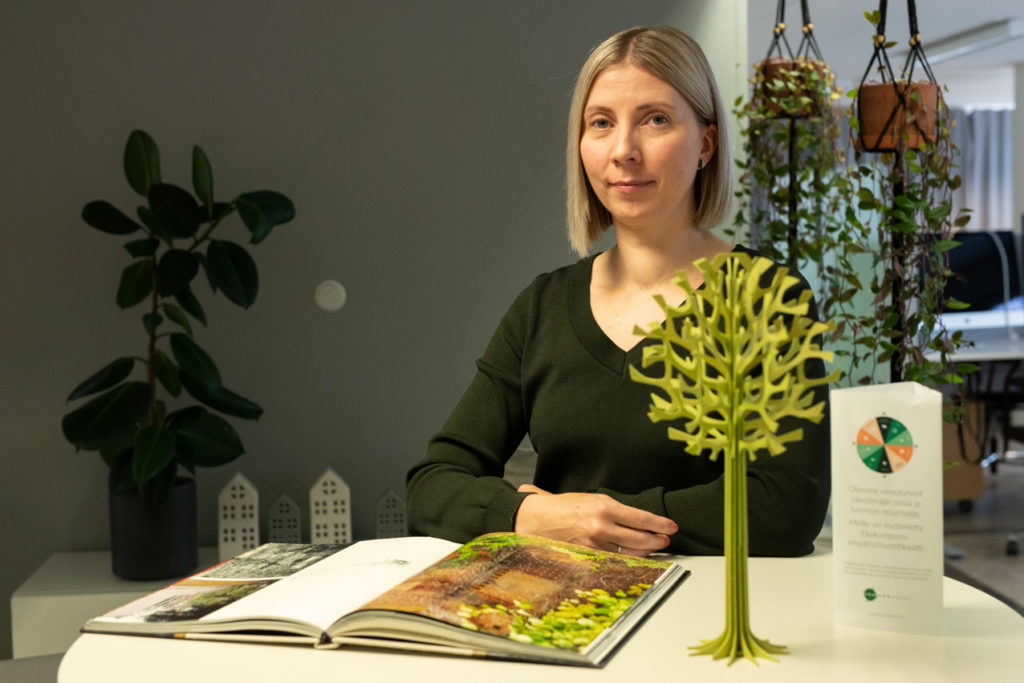No building is going to last forever – this fact has also been recognised in building design, where many different types of demolition have been carried out in recent years, resulting in a huge amount of waste that is sometimes difficult to deal with. The life cycle of structures and materials is always limited, so thinking about the after-use processes for different products is a good idea at the design stage. Ecological construction practices must be considered from the very beginning.
Increasingly, architects receive a clear wish list from the client that includes the ecological impact of the project. Hanne Juola, interior architect at the Oulu-based architectural office Avario, says that she considers the recyclability of materials whenever possible in her own work. “The best case scenario is when I can use materials that already have a high recycling rate and that are also recyclable after their life cycle.“
Environmental considerations guide the design process
Avario employs 24design experts who mainly design schools, daycares, and nursing homes. The company is committed to creating buildings that are built with consideration for sustainability and the environment. Avario’s environmental management system has been developed together with the EcoCompass tool created by the Finnish Association for Nature Conservation. It was used to map the environmental impacts of the design and to draw up an environmental programme with objectives. The system was audited by an external expert.
“I have used Ewona’s products in dozens of schools, and that choice is based on the products’ allergy safety and their M1 emission and cleanliness rating. The products also must be rated for Class A sound absorption. Ewona’s products meet all these criteria.” This shows how comprehensive environmentally friendly construction truly is. Juola also enjoys that she can support a company in the Oulu region at the same time. “At first I didn’t even know that the factory was so close to Haukipudas!“
A good soundscape creates comfort
Juola says that when planning buildings such as schools or daycares, consideration must be given to how the premises suit different age groups. “Children may stay in these spaces for extended periods of time on a daily basis. That makes the soundscape extremely important, as calm acoustics increase comfort.” Acoustics are improved by using acoustic panels in the ceilings. The walls can also be fitted with acoustic insulation, and softer, sound-absorbing materials can be chosen for the flooring.
The sound environment is also important in nursing homes to make the space feel homely. “We also need to consider the necessity for a clear layout in these spaces, as residents may have impaired vision or perception. These spaces must allow for unhindered movement and accessibility.“
Acoustic lath panels are an interesting new product
Juola finds Ewona’s acoustic lath panels interesting new products, and she believes she will be using them in many projects. “These aesthetically pleasing lath panels are an excellent interior design solution.” The ready-made and easy-to-install lath panels are also a welcome addition to construction sites, as there’s no need to manually install the laths one by one on top of the acoustic panelling.
As with other Ewona products, the acoustic lath panelling uses high recycling rate material. They are also emission-free, safe for indoor air, and recyclable. The product is also completely domestic-made. “I have not received any complaints from customers about Ewona’s products. That’s also one reason they’re so pleasant to use,” Juola concluded.
(Please note. Avario merged with Arco Architecture Company in January 2023.)
